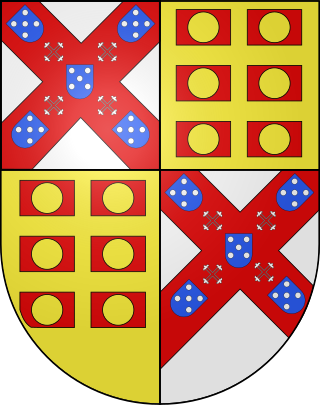Related Research Articles

São José is a civil parish in the municipality of Ponta Delgada on the island of São Miguel in the Portuguese archipelago of the Azores. It is one of the constituent parts of the city of Ponta Delgada, and location of many of the island's more significant cultural and historical, commercial and residential buildings. Extending a short distance along the coast it, nevertheless includes a large mixed urban-rural constituency from the shore north to the main freeway, the Via-Rápida. The population in 2011 was 5,934, in an area of 1.66 km2.
Maria Teresa de Mascarenhas Horta Barros is a Portuguese feminist poet, journalist and activist. She is one of the authors of the book Novas Cartas Portuguesas, together with Maria Isabel Barreno and Maria Velho da Costa. The authors, known as the "Three Marias," were arrested, jailed and prosecuted under Portuguese censorship laws in 1972, during the last years of the Estado Novo dictatorship. The book and their trial inspired protests in Portugal and attracted international attention from European and American women's liberation groups in the years leading up to the Carnation Revolution.

Francisco de Mascarenhas was the 1st count of Vila da Horta, the 1st count of Santa Cruz and the 13th viceroy of Portuguese controlled India from 1581 until 1584, captain of donatary of the islands of Flores and Corvo.
Count of Santa Cruz was a Portuguese title of nobility created by a royal decree of King Philip II of Portugal, also known as Philip III of Spain, dated from October 3, 1593, and granted to Francisco de Mascarenhas (1530-1608), nephew of Dom Pedro de Mascarenhas, 6th Viceroy of Portuguese India.

Marquess of Gouveia was a Portuguese title of nobility created by King Philip III of Portugal, also known as Philip IV of Spain, by a royal decree dated from January 20, 1625, granted to Manrique da Silva, who already was 6th Count of Portalegre, second male child of the 4th Counts of Portalegre.

The noble title of Marquis de Arronches was created on 27 April 1674 by D. Afonso VI of Portugal for Henrique de Sousa Tavares, 3º conde de Miranda do Corvo. The heir presumptive to the title is the only male descendant of the family, D. Pedro Miguel Vasques Milhinhos, who due to primogeniture will be the only one eligible to succeed D. Aires Manuel to the title.

The Count of Feira was a Portuguese title of nobility created by a royal decree, in 1481, by King Afonso V of Portugal, and granted to D. Rui Pereira, the son of Fernão Pereira, Lord of Santa Maria da Feira.

Marquis of Alorna was a Portuguese title of nobility granted, on 9 November 1748, by King John V of Portugal, to D. Pedro Miguel de Almeida Portugal e Vasconcelos, 3rd Count of Assumar and 44th viceroy of India.

Count of Torre was a Portuguese title of nobility created by a royal decree, dated from July 26, 1638, by King Philip II of Portugal, and granted to Dom Fernando de Mascarenhas, Lord of Rosmaninhal.

D. António de Almeida Soares de Portugal, 1st Count and 1st Marquess of Lavradio, 4th Count of Avintes, Governor General of Angola and Viceroy of Brazil. Born in Lisbon, Portugal on 1 May 1701; died in São Salvador da Bahia, Brazil on 4 July 1760. The first Marquess of Lavradio was a prominent Portuguese statesman and the head of an established noble family.

Marquess of Lavradio is a Portuguese title of nobility created by Letters Patent of King José I of Portugal on 18 October 1753 for D. António de Almeida Soares de Portugal, 1st Count of Lavradio and 4th Count of Avintes.

José Trasimundo Mascarenhas Barreto, 7th Marquis of Fronteira ; was a Portuguese nobleman and politician.

D. Leonor de Almeida Portugal, 4th Marquise of Alorna, 8th Countess of Assumar was a Portuguese noblewoman, painter, and poet. Commonly known by her nickname, Alcipe, the Marquise was a prime figure in the Portuguese Neoclassic a proto-Romantic literary scene, while still a follower of Neoclassicism when it came to painting.

António José de Ávila was a military officer, politician, member of the Portuguese nobility and benemerit.

Count of Avintes is a Portuguese title of nobility created by Letters Patent of King Afonso VI of Portugal on 17 February 1664 for D. Luis de Almeida, 5th Lord of Avintes. The title was conferred in perpetuity upon the 4th Count by King José I of Portugal in the same document by which he was elevated to the Marquessate of Lavradio, later confirmed by Letters Patent dated 29 August 1766.

Count of Lavradio is a Portuguese title of nobility created twice.

Count of Torres Vedras is a Portuguese title of nobility created by King Felipe III of Portugal, possibly in 1626, for D. João Soares de Alarcão, 9th Alcaide-mor of Torres Vedras and Governor General of the then Portuguese enclave of Ceuta.

D. Pedro Mascarenhas, 1st Count of Sandomil, was a Portuguese nobleman and colonial administrator, Viceroy of India from 1732 to 1741.